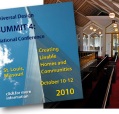 If you are not a lawyer, but you play one on TV, you may have a passing understanding of the legal concept of a statute of limitations. This is post is to provide you just a little more information about the concept, and how it applies to your North Carolina construction project.
If you are not a lawyer, but you play one on TV, you may have a passing understanding of the legal concept of a statute of limitations. This is post is to provide you just a little more information about the concept, and how it applies to your North Carolina construction project.
What is a statute of limitations, and why is it important?
The Statute of Limitations is a time-barring statute which gives you a set time within which to bring an action (i.e., lawsuit) against another party. If you do not bring your lawsuit within that period of time, the court will kick it to the curb. The reasoning behind the statute of limitation (often, ironically, abbreviated as “SOL” in legal circles) is that people need to have some certainty in how long they can be sued for an event that happened in the past. Witnesses die or forget, papers are destroyed, and in general it is extremely difficult to try a case years after the fact. The law has, therefore, established a somewhat arbitrary deadline for when you can sue or be sued, and it is vital that you do not go past that deadline if you hope to bring a lawsuit.
What is the statute of limitations on a construction project?
The answer, as always, is: it depends. The statue of limitations is governed by whatever state’s law will apply to your case—usually, but not always, the state the project was built in. The statute of limitations is also determined by what type of lawsuit you are trying to bring (or defend against).
In North Carolina, the statute of limitations for most construction disputes (breach of contract, professional negligence, implied warranty of plans) is generally 3 years from the date time when you knew or should have known about the issue. N.C. Gen. Stat §1-52.1 ABL Plumbing and Heating Corp. v. Bladen Co Board of Education, N.C. App. 623 S.E.2d 57 (2005). See also AIA A201 para. 13.7. As always, there are exceptions. If a contract is “under seal”, a claim can be brought for up to 10 years. (N.C. Gen. Stat. §1-47).
If the contract involves merchandise and falls under the Uniform Commercial Code, the statute of limitations is 4 years. N.C. Gen. Stat §25-2-725. However, where a defect in merchandise results in bodily injury or damage to real property, the shorter 3 year statute still applies. Hanover Ins Co. v. Amana Refrigeration, Inc., 106 N.C. App. 79, 415 S.E.2d 99 (1992). In Hanover, a defective HVAC unit caused a fire, which destroyed a building. The court held that the shorter 3 year statute of limitations applied because the defective merchandise caused damage to the real property.
Therefore, it is best practice to assume that the Courts will find that the statute starts running at the first inkling of a problem, and bring your action accordingly. Also, regardless of the length of any warranty period, contractors can still be liable until the statute of limitations period expires.
What happens to claims after the owner accepts the project?
Once a project has been accepted by an owner, the owner waives his right to claim damages for all but latent defects. Acceptance by the owner with knowledge of a defective performance may be deemed a waiver of the defective performance.
Where, however, the defect is unknown (or “latent”), the owner’s acceptance does not waive the defective performance. Tisdale v. Elliott, 13 N.C. App. 598, 186 S.E.2d 685 (1972). If a defect is a “latent” defect, hidden or not readily discoverable, the statute of limitations starts running from the date of discovery. Under AIA A201 para 13.7, any statute of limitations is deemed to have accrued in any and all events not later than the date of Substantial Completion. This section may shorten the statute of limitations in some cases of latent defects.
Can the Statute of Limitations be lengthened or shortened?
Yes. But, as they say on television, “don’t try this at home.” Carefully drafted agreements for a shorter or longer period of time can be executed. Consult your attorney before you do so, however. You may also want to check with your insurance carrier to make sure you have sufficient insurance coverage for a longer warranty period.
What if the parties are working together to fix construction problems?
If the parties are working to fix problems, but the statute of limitations is fast approaching– run, don’t walk, to your attorney to discuss a tolling agreement to stop the running of the statute, or otherwise enter into legally enforceable agreements concerning the statute of limitations. Just because the parties are all working together to solve a construction issue now doesn’t mean that the finger-pointing won’t begin once the bill is presented.
Have a question about the statute of limitations?
Comment below, drop me an email, or find me on twitter @melissabrumback .
_______________________
Photo (Public Domain): “brightly coloured sticky notes and tags” by Adrian van Leen via OpenPhoto.




